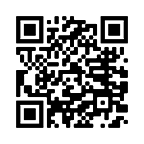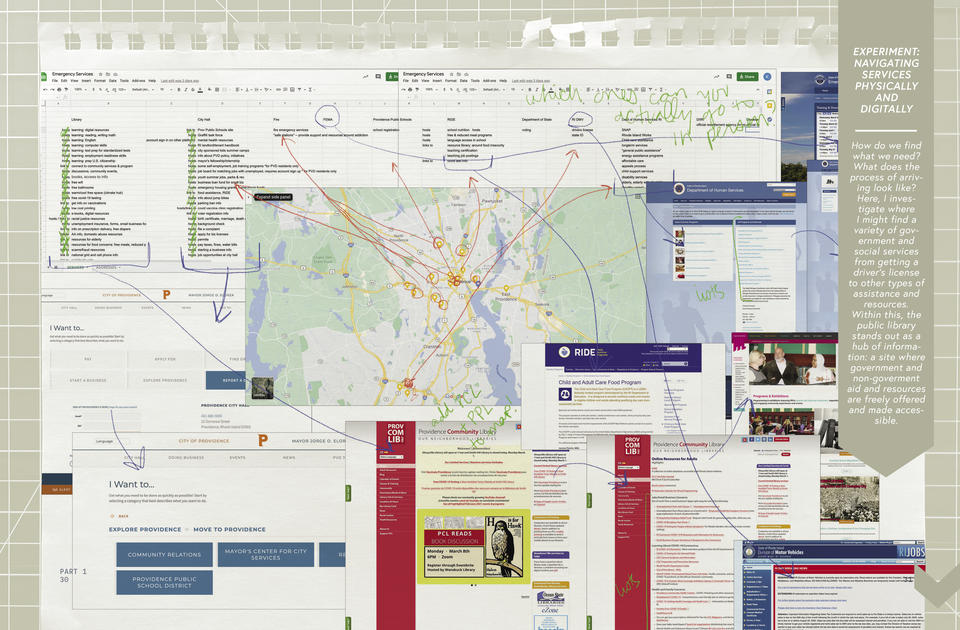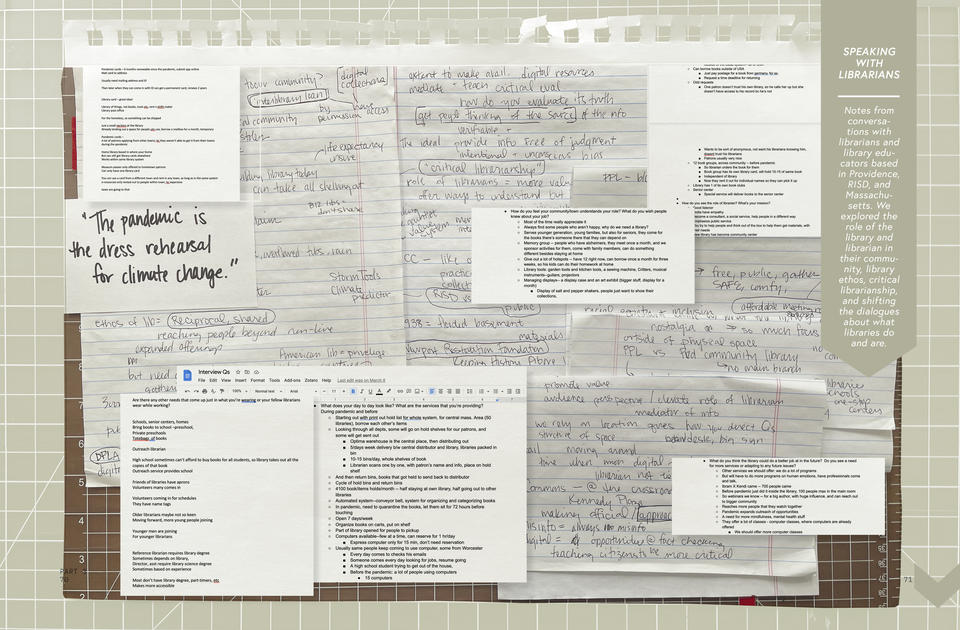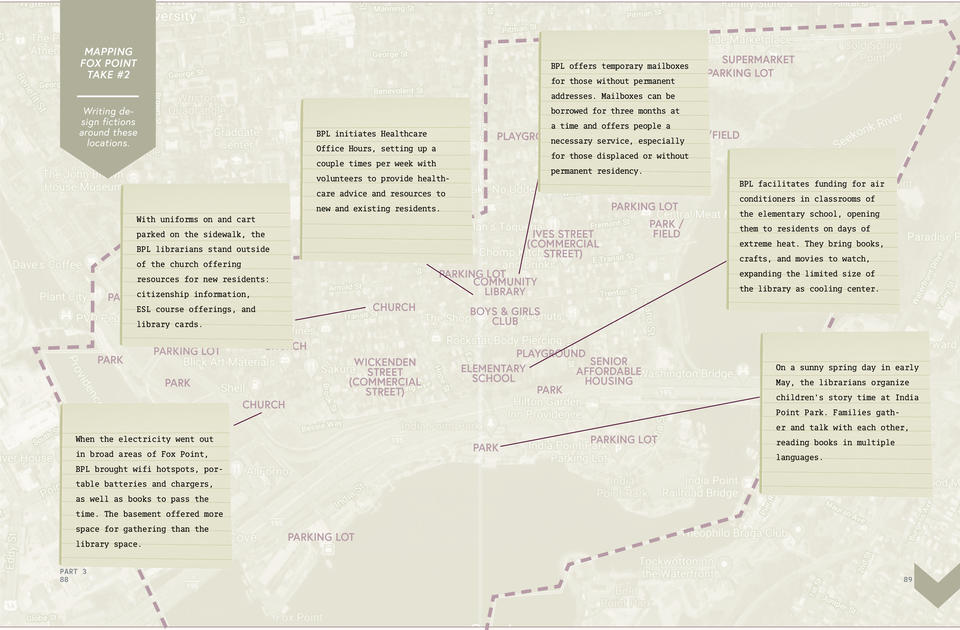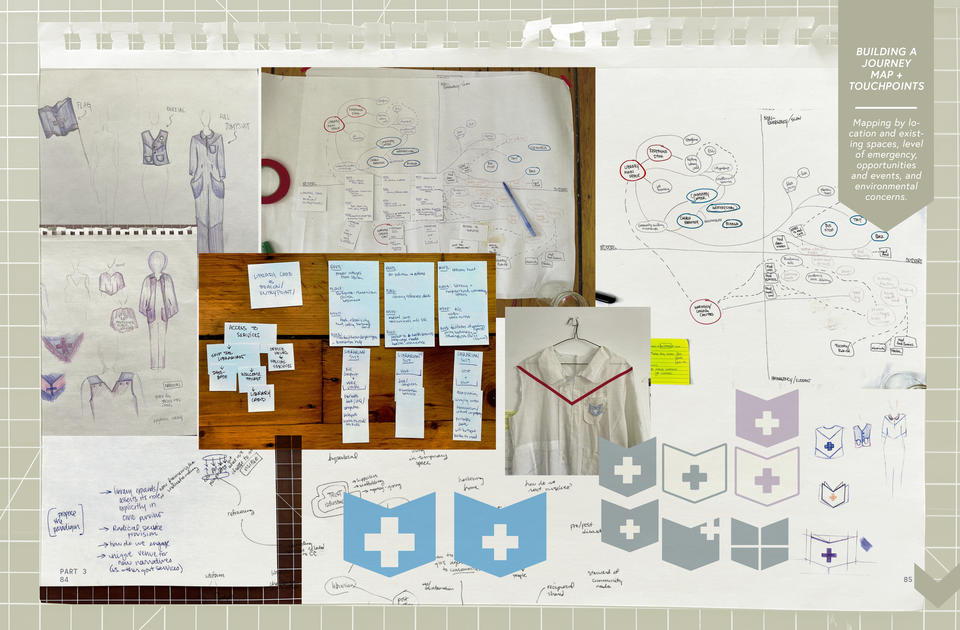ABSTRACT
Stressors like climate change will put strain on our communities, making them more vulnerable. I am asserting and expanding the role of the public library as a civic space for radical care and community resilience. This work explores the ways in which the public library, as an existing institution, could adapt to the needs of its changing environment and community. Interventions are visualized by a librarian’s jumpsuit and library apron, an adapted library book cart, public signage, and a re-imagined library card.
I imagine a public library that pushes the bounds of its physical building and actively and compassionately serves residents in and across spaces. Sited in Providence, RI, this work explores Providence’s climate change future and the public library’s role in building more resilient community in uncertainty.
Introduction:
Beacon Public Library (BPL) is part-speculation, part-systems design proposal for asserting and expanding the role of the public library as a civic space for radical care and community resilience in the face of climate change. This work explores the ways in which the public library could adapt to the needs of its changing environment and community. Interventions are visualized by a librarian’s jumpsuit and library apron, an adapted library book cart, public signage, and a library card. The artifacts of these interventions make librarians visible and accessible, establishing their role as essential in providing expanded community services. They make BPL public-facing, critical, and adaptable, for climate crisis and non-crisis scenarios.
This research is built around understandings of community resilience and sociologist Eric Klinenberg's “social infrastructure;” climate change and climate-induced migration as processes that are often slow and compound; and through speaking with immigrants and librarians based in the greater Providence area. Reflecting on climate change and the migration that comes with it, it is the library’s services that feel uniquely positioned to build community resilience, while offering services and information for the many people who may need it.
Image
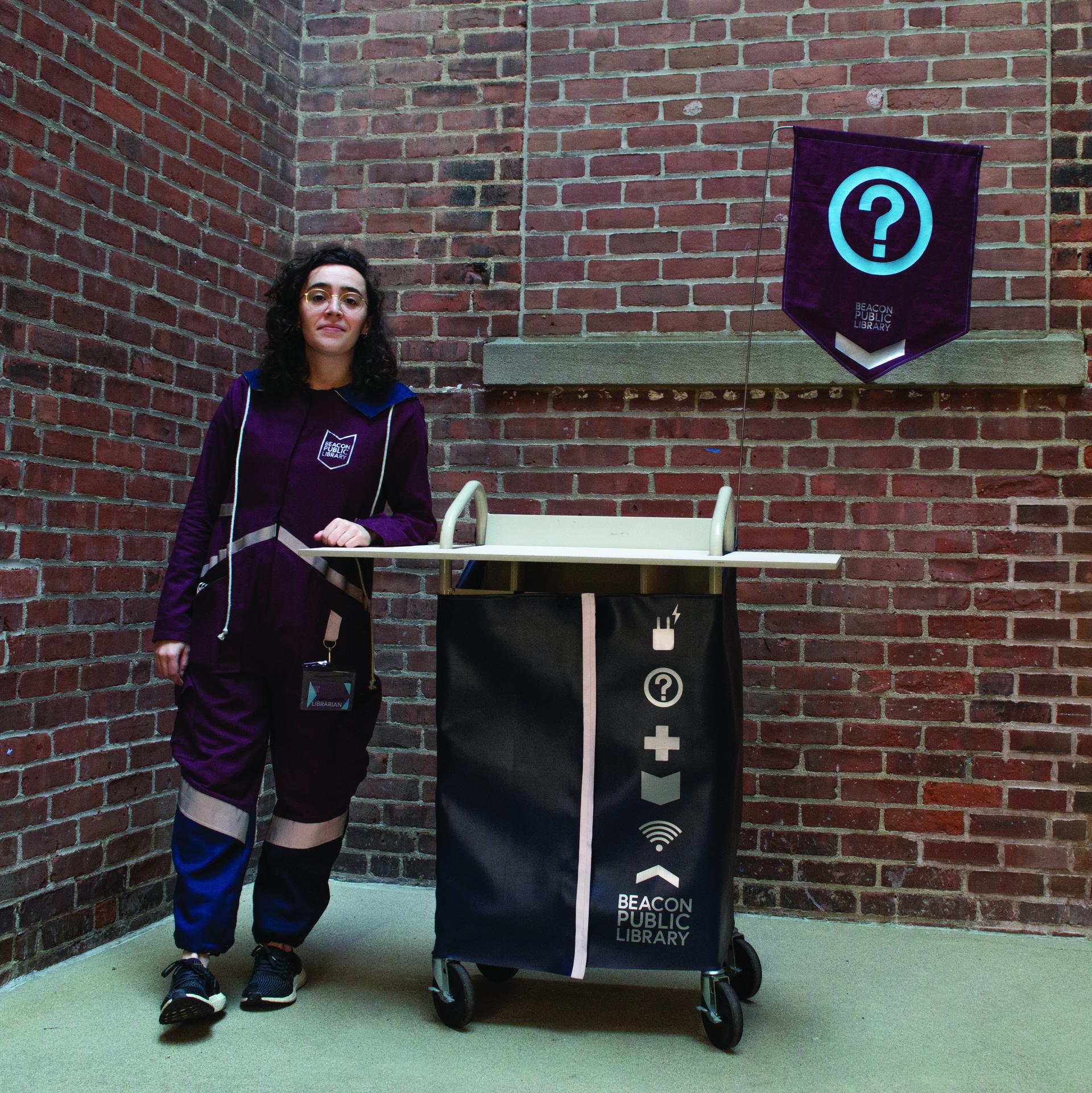
▲ Following a storm that leads to power outages in Fox Point, the librarian dons her jumpsuit and packs up her book cart with supplies including books, wifi hotspots and portable chargers, bottles of water and non-perishable food items. BPL shifts to other spaces like the basement of the Portuguese-American Church where there is gathering space for people to gather and receive necessary services.
Image
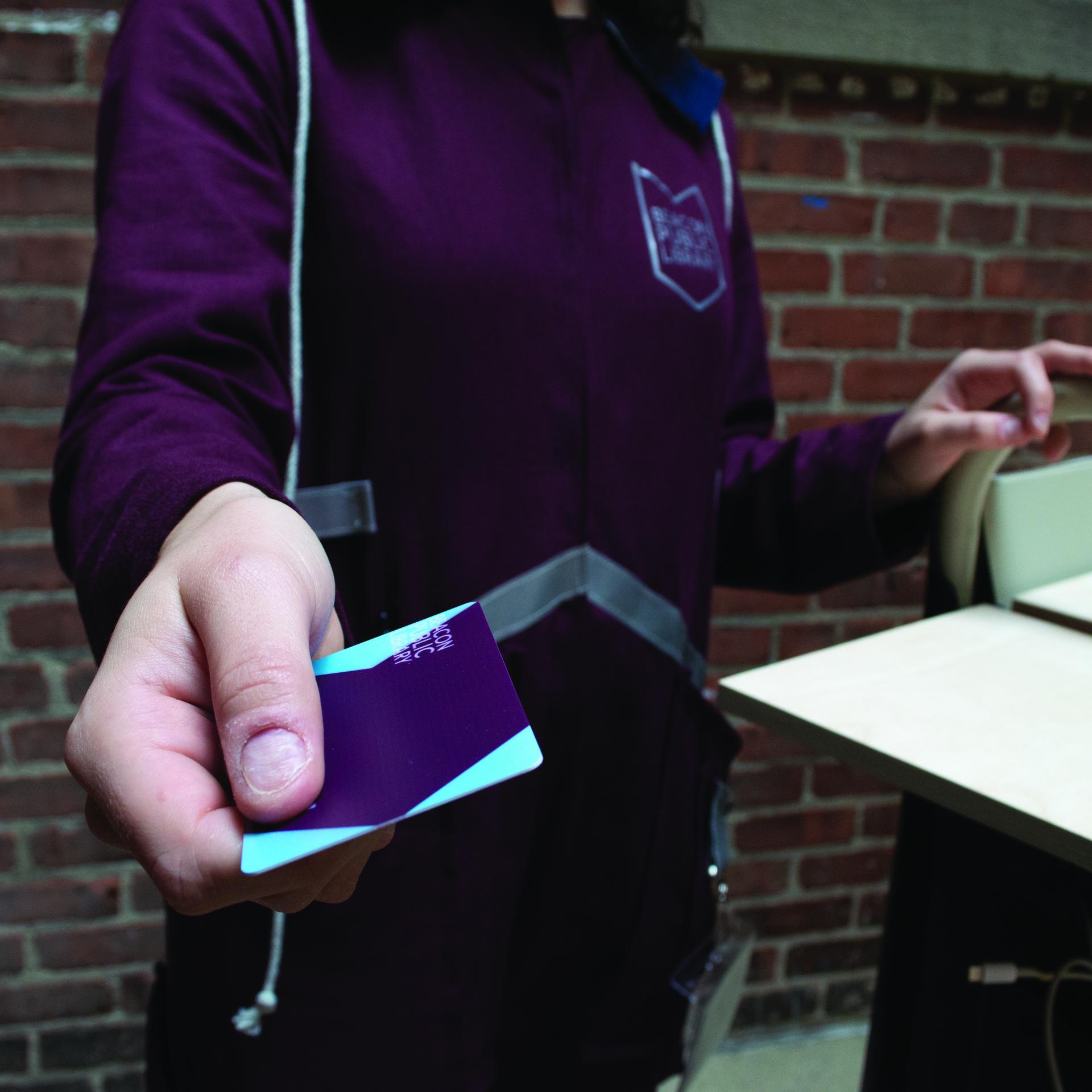
Image
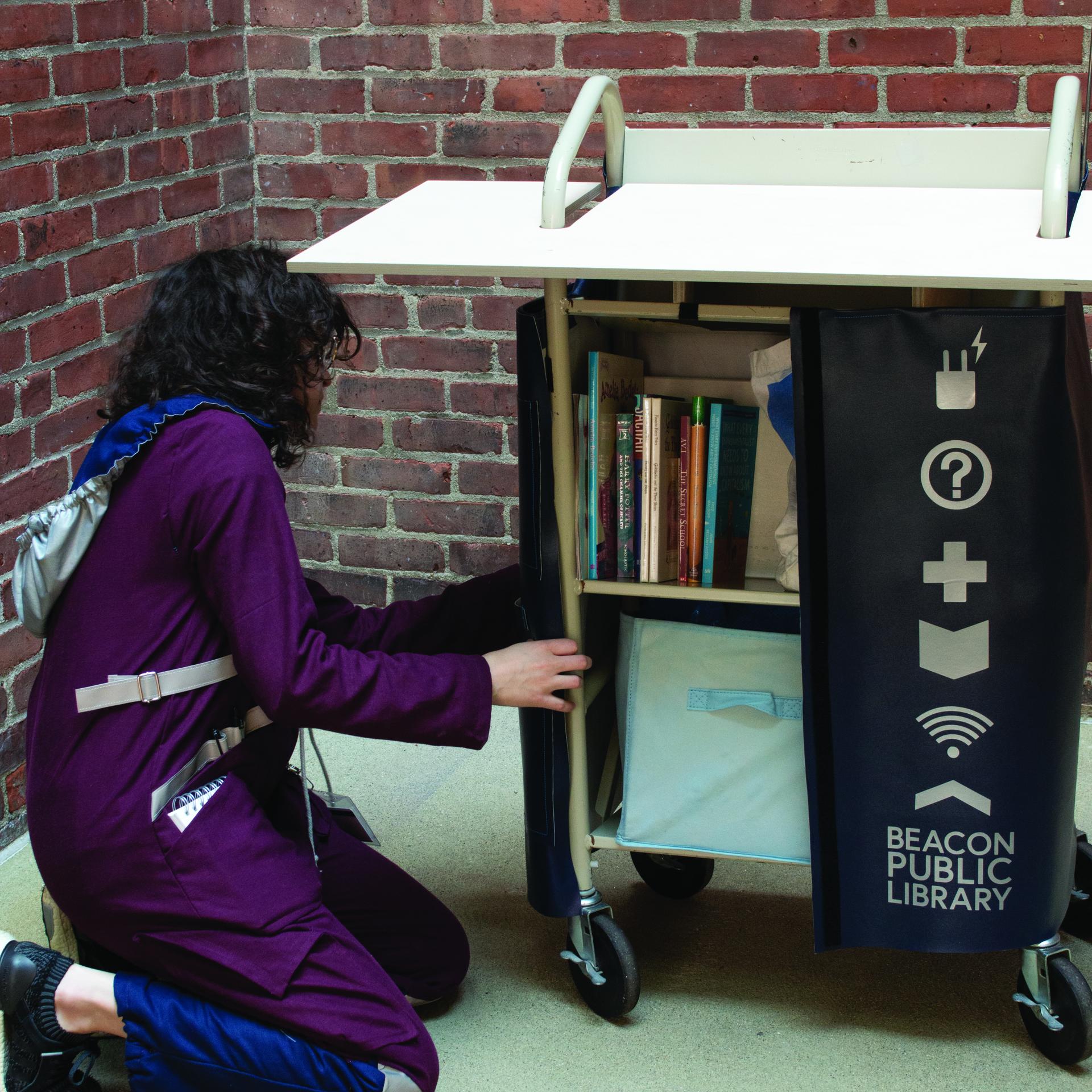
Image

▲From left to right:
A library card that identifies the member's role at BPL (Librarian, Volunteer, Member) and provides temporary mailboxes for community members in flux.
Preparing the book cart with necessary supplies to be moved outside the library building.
The library apron worn by librarians and volunteers in the library space. In emergency scenarios, the apron is turned inside-out to reveal reflective materials, making its wearers more visible.
Book Excerpt:
These types of days happened more and more. Sometimes they felt scary—intense and dark, wind and rain pounding the windows, lights flickering, basements flooding. And sometimes they felt routine: a slow and constant darkening, of air that felt thicker from the moist heat or the accumulating particulates, of seasons shifting and supermarkets missing produce, of dead grass. Climate change didn’t always ring like an emergency alarm. It just creeped. Eventually we adapted, thanks to the librarians. They had been here the whole time, quietly recommending books and resources. The librarians watched their city struggle more: how it became hard to organize resources, recoveries, services across spread out spaces. How new and old residents didn’t know how to get the help they needed, or how to help each other. The neighborhood library flooded once. So they decided it was best to not rely solely on the space anymore.
Best to make the library the entire city. Can a city be a library? They got more volunteers, dedicated to neighborhoods or single streets or blocks, some who act as “traditional” librarians, others as specialists in subjects like healthcare and citizenship, and even others as trained neighborhood recovery organizers. They planted the public library in the Boys & Girls Club some days, the elementary school and the church basement others, outside the supermarket. They had been so quiet for so long, that at first when we saw them clad in their maroon and navy jumpsuits around the city we thought “who are they?” And then we realized: they were doing it for us, making their services and skills visible for us. Showing us a way our city could live, maybe even flourish in these conditions. They gave us anchors in times of transience, stability in uncertainty. They were always there, longstanding and adaptable. They illuminated the city back to itself. They made libraries our beacons.
Research Excerpt:
▲ Visualizing the design research process: exploring Providence services offered, speaking with librarians, mapping scenarios across Fox Point, prototyping and sketching journey maps
Image
